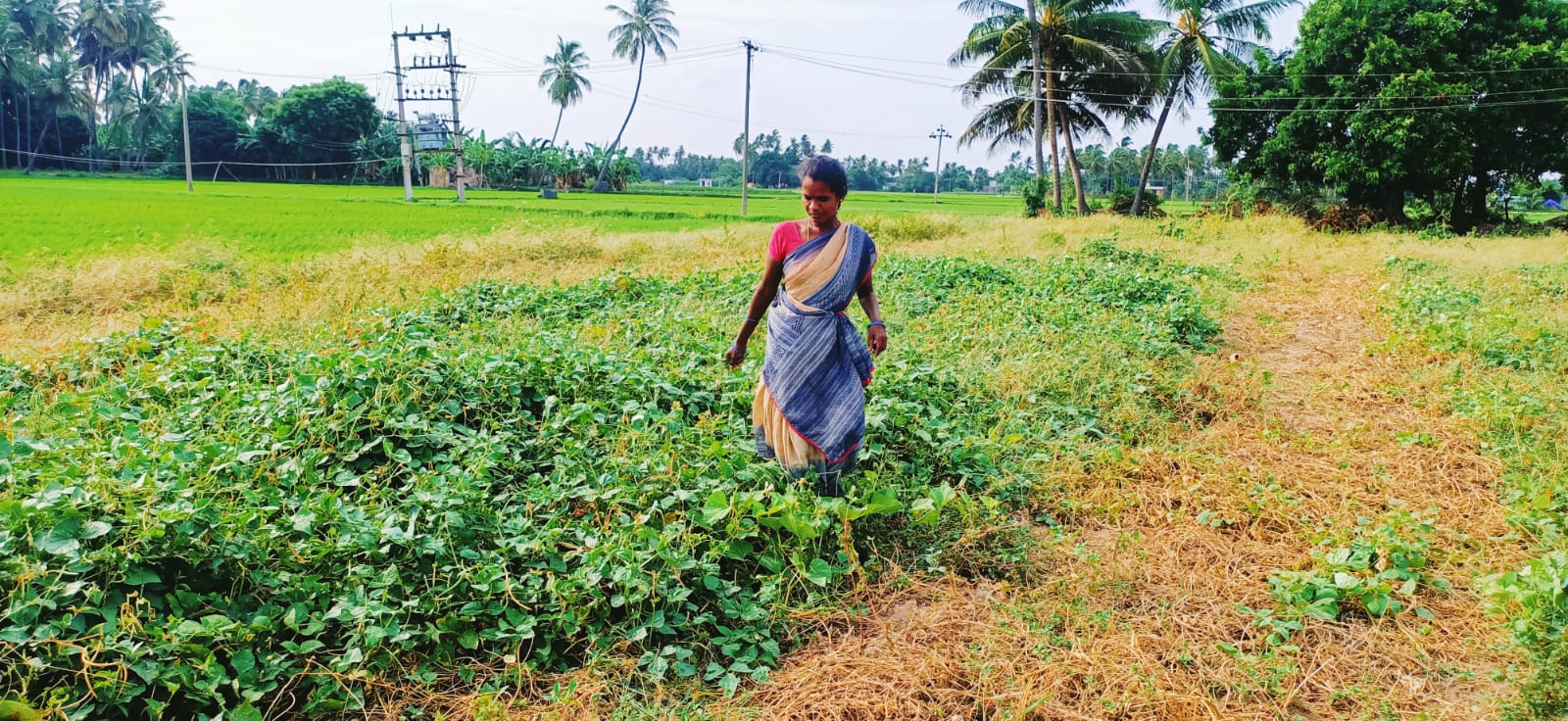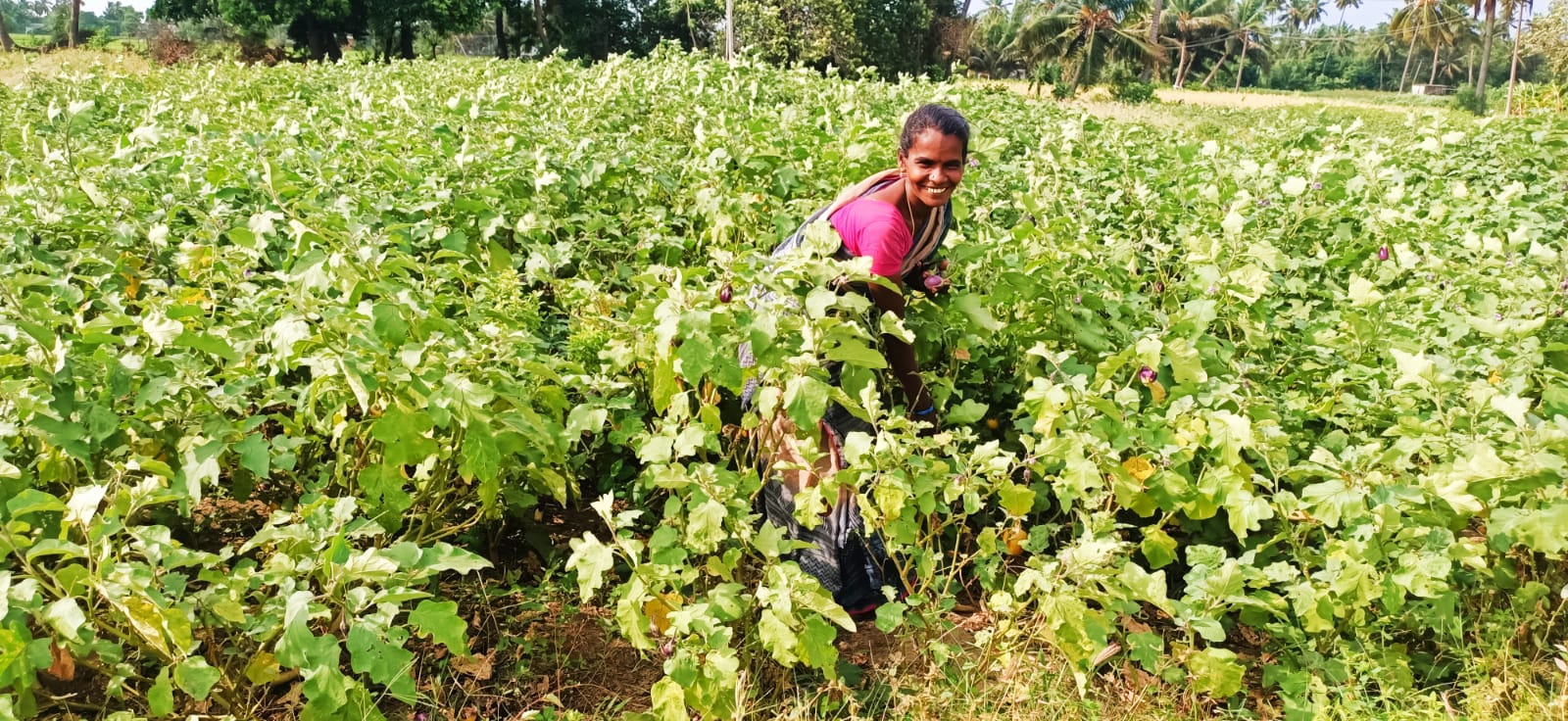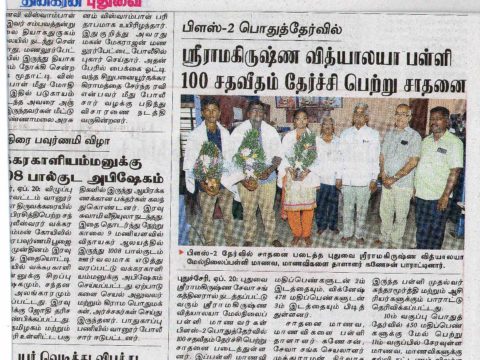-Penned by Board Member Alo Pal
 Ramayee and her husband have taken on lease an acre and a half of land and grow seasonal vegetables and flowers year-round to earn a living. Her husband is disabled and supervises work on the land and when required, he hires seasonal labor. They have received two loans from Sharana’s Social Entrepreneurship Program so far, one was to buy a cow and the other was to pay the annual lease amount. This obviously struck me as odd, because Sharana loans are rarely given to relieve debt of the beneficiary. But then agriculture isn’t like any other business plan we fund or boost. There is many a slip between sowing and reaping. Devastating floods a few years ago meant that the entire crop was washed off as was any return on investment.
Ramayee and her husband have taken on lease an acre and a half of land and grow seasonal vegetables and flowers year-round to earn a living. Her husband is disabled and supervises work on the land and when required, he hires seasonal labor. They have received two loans from Sharana’s Social Entrepreneurship Program so far, one was to buy a cow and the other was to pay the annual lease amount. This obviously struck me as odd, because Sharana loans are rarely given to relieve debt of the beneficiary. But then agriculture isn’t like any other business plan we fund or boost. There is many a slip between sowing and reaping. Devastating floods a few years ago meant that the entire crop was washed off as was any return on investment.
The cattle loan ensures at minimum a steady income after expenses are paid for. For agriculture, the plot of land is divided into two separate types of plantations. One section has a systematic relentless rotation of seasonal vegetables such as bottle gourd, brinjal, cluster beans, cucumber, and ground nut. Field preparations, sowing at the right time, irrigating the plots, timely harvest and sale have to be synchronized to a perfect rhythm. Those of us who buy fresh vegetables know the shelf life of everything we purchase and how some vegetables are eaten raw, some ripe and some somewhere in between. As consumers we procure our produce from stalls knowing quite well the order of consumption, we have refrigerators to store and freezers to preserve. Now spare a thought just for a moment for the farmer and the pressures of precise timing of harvest and transport. Okra, for example, is inedible even one extra day unharvested, while some others may have more leeway but all in all it is constant touch and go. To that one can add the vagaries of unseasonal rain or drought and availability of hired labor.
The second crop is a tube rose plantation. This is five months of work and a twenty day harvest window where income jumps to 2000-3000 a day. These 20 days are crucial bulk income days that make up for the months of irrigation, manuring and pest control.
“This is hard work, have you ever thought of doing something less taxing? More predictable in terms of income?” I ask Ramayee.
“No, never”
And that is how you actually explain the connection a farmer has with his land and his animals. The work is relentless, for the marginal farmer land holdings are small and the rotation of crops and crop cycles merciless in their rhythm and vital for subsistence. Whether rain-fed or irrigated, both come with their risks, but the farmer doesn’t give up on his land. Mother Earth is what nourishes them.
There is no explanation for this life choice. It is something that the rest of us should be grateful for when we nourish ourselves. And spare a thought for them when we welcome an unseasonal shower, and enjoy water supply from municipal pipelines filing our sumps and water tanks with bankable assurance. Some place away from our urban centers there toil a brood of men and women so the world eats.













